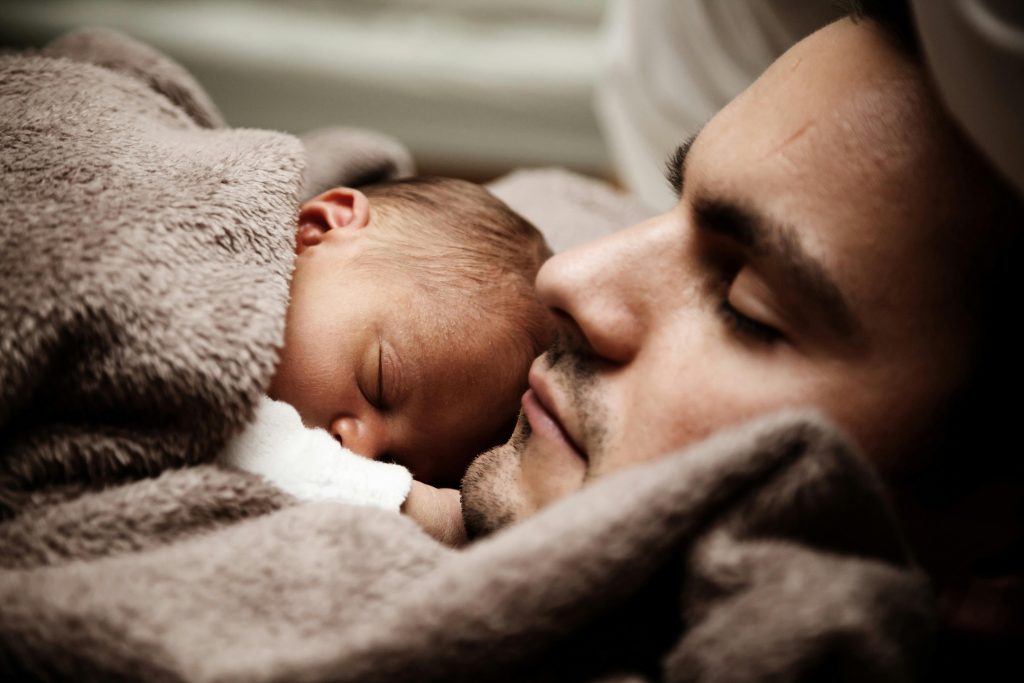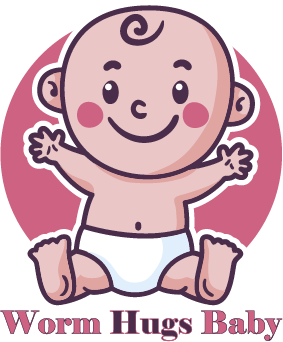
🍼👶 Welcome to the incredible journey of your baby’s first year! It’s a time of wonder, growth, and countless precious moments. But let’s be honest – it can also be overwhelming. With each passing month bringing new developments and challenges, you might find yourself asking, “Am I doing this right?”
Don’t worry, you’re not alone. Every parent faces uncertainty during this crucial period. That’s why we’ve created this comprehensive month-by-month guide to your baby’s development and care. From those early newborn days to the exciting approach to toddlerhood, we’ll walk you through what to expect and how to provide the best care for your little one. Whether you’re a first-time parent or adding to your family, this guide will help you navigate the beautiful, sometimes chaotic world of your baby’s first year with confidence. Let’s embark on this amazing journey together, starting with understanding your newborn in those first precious weeks.
Understanding Your Newborn (0-1 Month)

A. Recognizing newborn reflexes
Newborn reflexes are fascinating involuntary responses that help babies survive and interact with their environment. Understanding these reflexes can provide valuable insights into your baby’s neurological development.
Here are some common newborn reflexes:
- Rooting reflex
- Sucking reflex
- Moro (startle) reflex
- Grasp reflex
- Stepping reflex
| Reflex | Description | Duration |
|---|---|---|
| Rooting | Baby turns head towards touch on cheek | Disappears around 4 months |
| Sucking | Baby sucks when something touches the roof of mouth | Persists through infancy |
| Moro | Baby extends arms and legs, then pulls them in when startled | Fades by 2 months |
| Grasp | Baby closes hand when palm is stroked | Disappears around 5-6 months |
| Stepping | Baby makes stepping motions when held upright | Fades by 2 months |
These reflexes are crucial for survival and development. For instance, the rooting and sucking reflexes aid in feeding, while the Moro reflex helps protect the baby from falling.
B. Establishing feeding patterns
In the first month, establishing a feeding routine is crucial for your baby’s growth and your sanity. Whether breastfeeding or formula-feeding, newborns typically need to eat every 2-3 hours.
Rapid Growth and Development (2-3 Months)

Supporting head control
As your baby enters their second month, supporting head control becomes crucial for their overall development. Here are some effective ways to help your little one strengthen their neck muscles:
- Tummy time exercises
- Gentle head lifting during diaper changes
- Supported sitting with pillows
- Carrying baby in an upright position
| Activity | Benefits | Frequency |
|---|---|---|
| Tummy time | Strengthens neck and upper body | 3-5 times daily, 3-5 minutes each |
| Supported sitting | Improves balance and core strength | 2-3 times daily, 5-10 minutes each |
| Upright carrying | Encourages head control and visual exploration | Throughout the day |
Encouraging social smiles
Around 6-8 weeks, your baby will start to develop their first social smiles. These heartwarming moments are crucial for emotional bonding and social development. To encourage these precious smiles:
- Make eye contact and smile frequently
- Use a high-pitched, cheerful voice
- Play simple games like peek-a-boo
- Respond positively to your baby’s attempts at communication
Introducing tummy time
Tummy time is essential for building strength and preventing flat spots on the back of the head. Start with short sessions and gradually increase duration as your baby becomes more comfortable.
Responding to coos and gurgles
Your baby’s coos and gurgles are early attempts at communication. Respond enthusiastically to encourage language development:
- Mimic their sounds
- Describe what you’re doing throughout the day
- Sing simple songs and nursery rhymes
As we move into the next stage, your baby will begin to discover the world around them with newfound curiosity and excitement.
Discovering the World (4-5 Months)

Grasping objects
As your baby enters the 4-5 month stage, their fine motor skills begin to develop rapidly. Grasping objects becomes a fascinating new ability for your little one. This milestone is crucial for hand-eye coordination and cognitive development.
- Reach and grab toys
- Transfer objects between hands
- Bring items to their mouth
To encourage this skill, provide a variety of safe, age-appropriate toys with different textures and sizes.
Rolling over milestones
Rolling over is an exciting milestone that typically occurs around this age. It’s a significant step towards mobility and independence.
| Rolling Milestone | Average Age | What to Watch For |
|---|---|---|
| Back to Side | 4 months | Increased head control |
| Back to Tummy | 4-5 months | Pushing up with arms |
| Tummy to Back | 5-6 months | Strong core muscles |
Encourage tummy time to help strengthen the muscles needed for rolling.
Starting solid foods
Around 4-5 months, many babies show signs of readiness for solid foods. However, breast milk or formula should still be the primary source of nutrition.
Signs of readiness include:
- Good head control
- Sitting up with support
- Showing interest in food
Start with single-grain cereals mixed with breast milk or formula, then gradually introduce pureed fruits and vegetables.
Recognizing familiar faces
At this stage, your baby’s social skills are blossoming. They begin to recognize and respond to familiar faces, especially those of their primary caregivers.
- Smiles at familiar people
- May show anxiety around strangers
- Enjoys social interaction and play
Engage in face-to-face interactions, play peek-a-boo, and use mirrors to help develop this skill.
As your baby continues to discover the world around them, the next few months will bring even more exciting developments in their physical and cognitive abilities.
Sitting Up and Exploring (6-7 Months)

Mastering the seated position
As your baby reaches the 6-7 month mark, they’ll begin to sit up independently, opening up a whole new world of exploration. This milestone is crucial for developing core strength and balance. Here’s a quick guide to help your baby master sitting:
- Support their back with pillows
- Practice tummy time to strengthen muscles
- Encourage reaching for toys while seated
| Age | Sitting Ability |
|---|---|
| 6 months | Sits with support |
| 7 months | Sits independently |
Expanding food choices
Now’s the time to introduce a variety of solid foods. Start with purées and gradually move to soft, mashed foods. Remember:
- Introduce one new food at a time
- Watch for allergic reactions
- Offer a mix of fruits, vegetables, and grains
Encouraging babbling
Your baby’s language skills are rapidly developing. Encourage their babbling:
- Respond to their sounds
- Use simple words and phrases
- Read books together daily
Developing object permanence
Object permanence is the understanding that objects continue to exist even when they can’t be seen. Play peek-a-boo and hide-and-seek games to help develop this concept.
Preparing for crawling
As your baby’s strength increases, they’ll start showing signs of wanting to move. To prepare for crawling:
- Place toys just out of reach
- Create safe spaces for exploration
- Encourage rolling and scooting
With these milestones in sight, your baby is well on their way to becoming more mobile and interactive. Next, we’ll explore the exciting phase when your little one truly gets on the move.
On the Move (8-9 Months)

Supporting crawling and mobility
At 8-9 months, your baby is likely on the move! This is an exciting time as your little one explores their environment with newfound independence. To support crawling and mobility:
- Create a safe space: Childproof your home to allow for safe exploration
- Encourage tummy time: Strengthens core muscles needed for crawling
- Use toys as motivation: Place toys just out of reach to encourage movement
- Practice assisted walking: Hold your baby’s hands as they take steps
| Mobility Milestone | Average Age Range |
|---|---|
| Crawling | 6-10 months |
| Cruising | 8-11 months |
| Walking | 9-15 months |
Introducing finger foods
As your baby’s pincer grasp develops, it’s time to introduce finger foods:
- Start with soft, easily dissolvable foods
- Cut foods into small, manageable pieces
- Supervise eating sessions to prevent choking
- Offer a variety of textures and flavors
Fostering separation awareness
At this stage, your baby may experience separation anxiety. To help:
- Play peek-a-boo to teach object permanence
- Practice short separations
- Maintain a consistent goodbye routine
- Provide a comfort object
Encouraging problem-solving skills
Stimulate your baby’s cognitive development with:
- Simple puzzles and shape sorters
- Stacking toys and blocks
- Hide-and-seek games with toys
- Cause-and-effect toys (e.g., pop-up toys)
As your baby becomes more mobile and curious, the next few months will bring even more exciting developments. Your little one will begin to show increased independence and communication skills, paving the way for the transition to toddlerhood.
Approaching Toddlerhood (10-12 Months)

Preparing for first steps
As your baby approaches their first birthday, they’re on the verge of a major milestone: walking! Here’s how to support their journey:
- Encourage cruising along furniture
- Provide push toys for balance practice
- Create safe spaces for exploration
- Offer positive reinforcement for attempts
| Activity | Purpose |
|---|---|
| Barefoot time | Improves balance and foot strength |
| Assisted walking | Builds confidence and coordination |
| Obstacle courses | Enhances problem-solving skills |
Expanding vocabulary
Your baby’s language skills are rapidly developing. Foster their communication abilities:
- Use clear, simple language
- Read books together daily
- Label objects and actions in daily life
- Respond positively to babbling and attempts at words
Celebrating first birthday milestones
The first birthday is a significant achievement. Typical milestones include:
- Standing without support
- Using simple gestures (waving, shaking head)
- Saying 1-3 words with meaning
- Understanding simple instructions
Transitioning to cow’s milk
Around the first birthday, it’s time to introduce cow’s milk:
- Start with whole milk for essential fats
- Gradually replace formula or breast milk
- Offer milk in a cup, not a bottle
- Limit milk intake to 16-24 ounces per day
As your baby enters toddlerhood, they’ll face new challenges and exciting developments. Next, we’ll explore essential care practices to support your child’s growth throughout their first year.
Essential Care Throughout the First Year

Maintaining vaccination schedules
Keeping your baby’s vaccinations up-to-date is crucial for their health and well-being. Follow the recommended immunization schedule provided by your pediatrician to protect your child from various diseases.
| Age | Recommended Vaccines |
|---|---|
| Birth | Hepatitis B |
| 2 months | DTaP, Hib, IPV, PCV, Rotavirus |
| 4 months | DTaP, Hib, IPV, PCV, Rotavirus |
| 6 months | DTaP, Hib, IPV, PCV, Rotavirus, Influenza |
| 12 months | MMR, Varicella, Hepatitis A |
Ensuring proper hygiene
Maintaining good hygiene practices is essential for your baby’s health. Here are some key hygiene tips:
- Wash your hands thoroughly before handling your baby
- Keep your baby’s diaper area clean and dry
- Give regular baths using mild, baby-friendly products
- Clean and sterilize bottles and feeding equipment
Childproofing your home
As your baby becomes more mobile, it’s crucial to create a safe environment. Childproofing should be an ongoing process throughout the first year:
- Cover electrical outlets
- Secure furniture to prevent tipping
- Install safety gates at stairs
- Keep small objects and choking hazards out of reach
Scheduling regular pediatric check-ups
Regular check-ups are vital for monitoring your baby’s growth and development. These visits typically occur at:
- 1 month
- 2 months
- 4 months
- 6 months
- 9 months
- 12 months
During these visits, your pediatrician will track your baby’s progress, administer vaccinations, and address any concerns you may have about your child’s health and development.

Your baby’s first year is a whirlwind of growth, milestones, and precious moments. From the early days of understanding your newborn to watching them approach toddlerhood, each month brings new developments and challenges. As your little one progresses through rapid growth, discovers the world around them, learns to sit up, and becomes mobile, your role as a parent evolves alongside them.
Throughout this journey, remember that every baby develops at their own pace. Celebrate each milestone, big or small, and don’t hesitate to seek guidance from healthcare professionals when needed. By providing loving care, stimulation, and support, you’re laying the foundation for your child’s future growth and development. Cherish these fleeting moments, as before you know it, your baby will be taking their first steps into toddlerhood and beyond.





